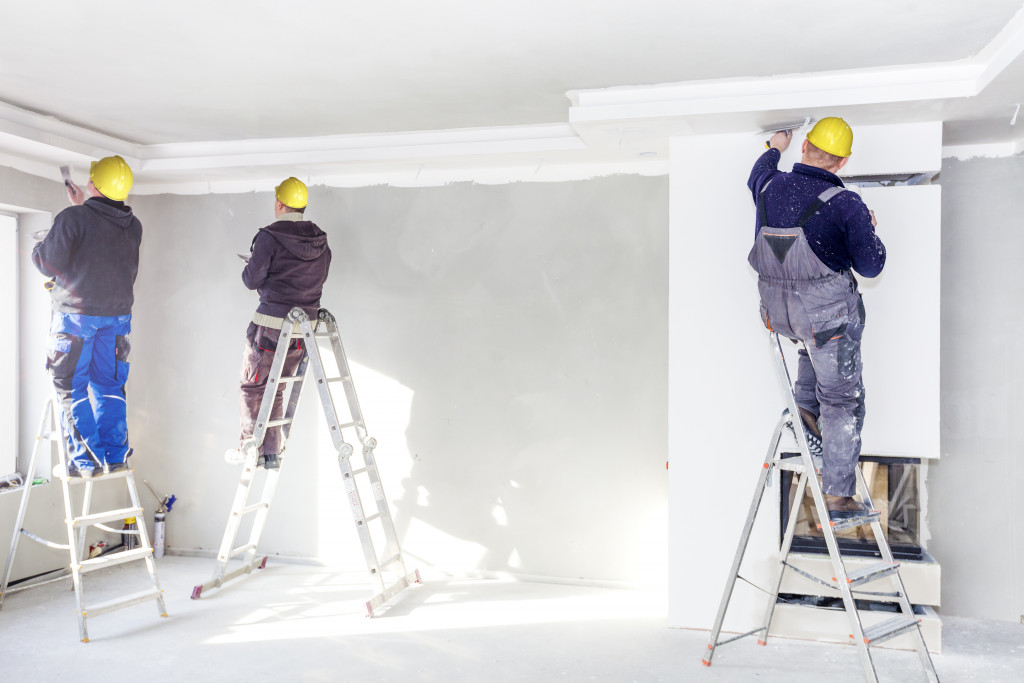Safety and Style: Upgrading Your Kitchen with Function and Flair
The kitchen is often considered the heart of the home. It’s where meals are prepared, memories are made, and conversations flow. But a beautiful and stylish kitchen shouldn’t come at the expense of safety. Upgrading your kitchen allows you to create a space that’s not only aesthetically pleasing but also functional and hazard-free. This article will guide you through merging safety and aesthetics seamlessly in your kitchen renovation, ensuring both a stunning space and peace of mind.
1. Where to Start When Remodeling a Kitchen
When considering where to start when remodeling a kitchen, the first step is to assess your needs. Take a look at your current kitchen layout and functionality to determine what improvements are necessary. Setting a budget is also crucial to ensure you stay on track financially throughout the remodeling process. Finally, finding inspiration from magazines, websites, and home improvement shows can help you visualize your dream kitchen.
Home insurance is another important consideration when remodeling a kitchen. It’s essential to update your policy to reflect the upgrades and changes made to your home, ensuring you are adequately covered in case of any accidents or damages. Additionally, if you require financial assistance for your remodel, exploring home loan options can help you fund the project without breaking the bank.
2. Planning Your Layout

When planning your kitchen layout, it’s essential to consider workflow to optimize the functionality of the space. Design the layout in a way that allows for smooth transitions between cooking, washing, and storage areas. To make the most of your kitchen storage, incorporate efficient cabinet systems, pull-out drawers, and pantry organization solutions.
Interior windows can be a great addition to your kitchen layout. They allow natural light to brighten the space, maintain visual connection between areas, improve ventilation, and add aesthetic appeal. They provide space division without isolation, are versatile in design, and are cost-effective compared to solid walls.
3. Selecting Appliances

When selecting appliances for your kitchen, focus on functionality to ensure they meet your cooking needs. Consider the size, features, and energy efficiency of each appliance to maximize their usability and minimize energy consumption. Opt for energy-efficient options to reduce your carbon footprint and save on utility bills in the long run.
Coordinating the styles of your appliances can create a cohesive look in your kitchen. Choose appliances with similar finishes and design elements to maintain a harmonious visual aesthetic. By selecting appliances that blend seamlessly with your cabinetry and countertops, you can achieve a unified and polished look in your kitchen.
Researching the latest smart technology features in kitchen appliances can enhance your cooking experience and streamline your daily routines. Look for safety features such as automatic shut-off functions and child lock mechanisms to prevent accidents and ensure peace of mind. By incorporating smart appliances into your kitchen, you can enjoy the convenience of remote operation and energy monitoring for enhanced efficiency.
4. Picking the Right Materials
When picking materials for your kitchen, focus on durability and sustainability. Durable countertop options such as quartz, granite, or stainless steel can withstand the rigors of daily use and resist stains and scratches. Eco-friendly flooring choices like bamboo, cork, or recycled materials can reduce your environmental impact and add a unique touch to your kitchen.
When it comes to kitchen cabinets, prioritize functionality by selecting durable materials that can withstand daily wear and tear. Opt for soft-close hinges and drawers to prevent slamming and protect little fingers from getting caught. Choose a style that complements the overall design of your kitchen while providing ample storage for all your cookware and utensils.
Safe and stylish cabinetry is essential for a functional and visually appealing kitchen. Choose materials that are free of harmful chemicals and toxins to ensure the health and safety of your family. Look for cabinets with sturdy construction and quality finishes that can endure years of heavy usage without deteriorating.
To create a cohesive and seamless look in your kitchen, coordinate the colors and textures of your countertops, flooring, and cabinetry. Select materials that complement each other while adding visual interest and depth to the space. By mixing and matching different materials, you can achieve a custom and personalized look that reflects your unique style.
5. Lighting for Safety and Style

Task lighting is essential in key areas of the kitchen where precision and focus are required, such as over the stovetop, sink, and countertops. Install under-cabinet lighting to illuminate work surfaces and make food preparation easier and safer. Ambient lighting sets the mood and ambiance in your kitchen, creating a warm and inviting atmosphere for dining and entertaining.
Adding accent lighting can highlight architectural features, artwork, or decorative elements in your kitchen, drawing attention to focal points and creating visual interest. Consider incorporating dimmer switches to adjust the brightness of your lighting fixtures according to your needs and preferences. By layering different types of lighting, you can create a versatile and dynamic lighting scheme that enhances both safety and style in your kitchen.
Properly positioning light fixtures and maximizing natural light sources can optimize the brightness and functionality of your kitchen. Strategic placement of lighting fixtures can eliminate shadows and dark spots, making it easier to work and move around the space. Consider installing interior windows to bring in natural light and fresh air, enhancing the overall ambiance and comfort of your kitchen.
6. Incorporating Smart Technology
Modern kitchen appliances equipped with smart technology features can revolutionize the way you cook, clean, and entertain in your kitchen. Look for appliances with built-in safety features, such as automatic shut-off functions and temperature sensors, to prevent accidents and injuries. By integrating smart appliances into your kitchen, you can enjoy the convenience of remote operation and monitoring, allowing you to control your appliances from your smartphone or tablet.
Home automation systems can streamline your daily routines and enhance the functionality of your kitchen. Connect your appliances, lighting, and security systems to a centralized smart hub for easy control and monitoring. By setting up schedules and routines, you can automate tasks such as turning on lights, preheating the oven, or adjusting the thermostat, saving time and energy in the process.
Energy monitoring tools can help you track and optimize your energy usage in the kitchen, reducing your carbon footprint and lowering your utility bills. By identifying energy-efficient appliances and practices, you can make informed decisions that benefit both the environment and your wallet. Utilize smart technology to create a sustainable and smart kitchen that prioritizes safety, efficiency, and style.
7. Ensuring Accessibility for All
Designing a kitchen with accessibility in mind is essential to accommodate individuals with mobility challenges and disabilities. Create clear pathways and ample space between countertops, appliances, and cabinets to allow for easy navigation and movement. Install pull-out shelves, adjustable countertops, and accessible storage solutions to make it easier for everyone to reach and use kitchen essentials.
Reachable storage solutions can enhance the functionality and usability of your kitchen, enabling users to access items without straining or bending. Install pull-out drawers, lazy Susans, or cabinet organizers to maximize storage capacity and keep items organized and within reach. Consider installing universal design features such as lever-style handles, touchless faucets, and adjustable lighting controls to create a more inclusive and user-friendly kitchen environment.
By incorporating accessibility features into your kitchen design, you can create a space that is welcoming and accommodating to all users, regardless of age or ability. Prioritize safety, convenience, and comfort by implementing thoughtful design elements and innovative solutions that enhance the overall accessibility and usability of your kitchen. Consult with kitchen designers and accessibility experts to ensure your kitchen remodel meets the needs of everyone in your household.
8. Styling Your Kitchen Space
Adding personal touches and decorative elements can elevate the style and charm of your kitchen, making it a unique and inviting space for cooking and gathering. Incorporate trendy elements such as bold colors, patterns, and textures to infuse personality and character into your kitchen design. Mix and match materials, finishes, and shapes to create visual interest and a dynamic aesthetic in your kitchen.
Make use of decor items such as artwork, plants, decorative bowls, and textiles to add warmth and personality to your kitchen space. Consider displaying functional and decorative items on open shelves or countertops for a personalized touch. By incorporating your personal style and interests into the design of your kitchen, you can create a space that is not only beautiful and stylish but also reflects your personality and taste.
Ensure that the styling of your kitchen space complements the overall design and architecture of your home, creating a cohesive and harmonious flow throughout the space. Coordinate finishes, colors, and textures to create a seamless transition between the kitchen and adjacent living areas. By blending function and flair in your kitchen design, you can create a space that is both practical and visually appealing, enhancing the beauty and functionality of your home.
9. Safety First in the Kitchen
Preventing trips and falls in the kitchen is crucial to ensure the safety of you and your family. Keep floors clean and clear of clutter, spills, and debris to reduce the risk of accidents. Secure loose rugs and mats with non-slip pads or adhesives to prevent them from shifting or causing slips. Place anti-fatigue mats in front of the sink and stove to provide cushioning and support while standing for extended periods.
Store sharp objects such as knives, scissors, and graters in designated areas away from the reach of children and pets. Use knife blocks, magnetic strips, or drawer organizers to keep sharp utensils organized and safely stored. Install childproof latches on cabinets and drawers containing hazardous materials, cleaning supplies, and sharp objects to prevent accidental access and injuries.
Properly storing hazardous materials such as cleaning agents, chemicals, and flammable items is essential to prevent accidents and ensure a safe environment in the kitchen. Store these items in locked cabinets or high shelves out of reach of children, pets, and curious hands. Keep fire alarms and extinguishers in working condition and easily accessible in case of emergencies, ensuring a prompt response and quick intervention in the event of a fire.
10. Hiring the Right Professionals
Researching contractors and kitchen designers is essential to ensure you hire the right professionals for your remodeling project. Check online reviews, portfolios, and references to assess the quality of their work and reputation in the industry. Verify that the contractors are licensed, insured, and experienced in kitchen remodeling to guarantee a successful and stress-free renovation process.
Checking certifications and credentials of contractors and kitchen designers can give you peace of mind and assurance that they meet industry standards and regulations. Look for certifications such as NKBA (National Kitchen and Bath Association) or NARI (National Association of the Remodeling Industry) to ensure the professionals are qualified and knowledgeable in their field. Communicate openly and clearly with your contractors and designers to convey your vision, expectations, and requirements for the project, ensuring a collaborative and transparent working relationship.
Hiring the right professionals for your kitchen remodel can make all the difference in the outcome and success of the project. By working with experienced and reputable contractors, and home builders, you can achieve a beautiful, functional, and safe kitchen that exceeds your expectations. Invest time and effort in selecting the right professionals who understand your needs and can deliver a high-quality result within your budget and timeline.
Conclusion
In conclusion, upgrading your kitchen with function and flair is all about finding the perfect balance between safety and style. By following these tips and guidelines, you can create a space that is not only beautiful and efficient but also safe and practical for everyday use. Whether you’re planning a complete remodel or a simple refresh, prioritizing safety features, accessibility, and stylish design elements can transform your kitchen into a functional and inviting space for cooking, dining, and entertaining. Consider incorporating smart technology, energy-efficient appliances, durable materials, and personalized styling to create a kitchen that reflects your lifestyle and values. By investing in the right professionals and communicating your vision clearly, you can bring your dream kitchen to life and enjoy the benefits of a safe, stylish, and functional space for years to come.


